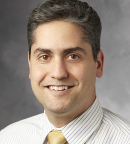In a randomized phase II trial, Christiane Querfeld, MD, PhD, and colleagues investigated the effects of a PD-L1–blocking strategy for targeting both the innate and adaptive immune systems in cutaneous T-cell lymphoma (CTCL). At the 2025 Society of Hematologic Oncology (SOHO) Annual Meeting,1 Dr. Querfeld reported that the combination of the PD-L1 immune checkpoint inhibitor durvalumab and the immunomodulatory agent lenalidomide demonstrated superior clinical activity compared with single-agent durvalumab in patients with refractory or advanced mycosis fungoides or Sézary syndrome. Dr. Querfeld is Professor of Dermatology/Dermatopathology in the Department of Pathology and Director of Cutaneous Lymphoma Program at City of Hope in Duarte, California.

I have treated several patients on this study, and we had some amazing responses, although it is very difficult to have a complete response in these patients.— CHRISTIANE QUERFELD, MD, PhD
Tweet this quote
“Our phase II results using the combined treatment regimen have revealed the most encouraging outcomes we have seen in our long experience of treating CTCL, a disease where complete response is notoriously difficult to achieve,” stated Dr. Querfeld. “The patients definitely did benefit, and we were able to save some patients from going directly to an allogeneic transplant.”
Study Details
In this small phase II trial of 25 patients, 13 received the combination of durvalumab plus lenalidomide, and 12 received durvalumab alone. These adults had histologically confirmed mycosis fungoides (92%) or Sézary syndrome (8%) and had failed to response to at least two prior systemic therapies. The median patient age in the durvalumab-alone cohort was 56 and in the combination arm, 65. Seven patients in both treatment arms had stage IB or IIB disease.
The dosage for durvalumab for both groups of patients was 1,500 mg intravenously on day 1 of a 28-day cycle. The dosage for those given lenalidomide was a 10-mg starting dose up to 20 mg daily for 21 days of each 28-day cycle.
Objective response rate, using the global composite response (based on skin, blood, nodes, and viscera) according to consensus guidelines, was the primary study endpoint. Duration of response, progression-free survival, and toxicity were secondary study endpoints. Exploratory endpoints included relationships between gene-expression profile, tumor microenvironment, and antitumor activity.
Results, Safety, and Tumor Microenvironment Findings
According to the study investigators, the combination therapy arm had an objective response rate of 75% vs 42% for the single-agent arm. In the combination therapy arm vs the single-agent arm, the 12-month progression-free survival rate was 73% (95% confidence interval [CI] = 38%–91%) vs 36% (95% CI = 11%–63%). The median progression-free survival was 6.2 months for durvalumab monotherapy and not reached for the combination of durvalumab plus lenalidomide.
“In the combination arm, in terms of best global response, there were four complete responses, four partial responses, and four patients with stable disease,” stated Dr. Querfeld. “Of the 12 patients in the durvalumab arm, there was one complete response, five partial responses, and six cases of stable disease. In terms of skin response, there were more patients with clinical benefit in the combination arm vs the durvalumab arm.”
Dr. Querfeld mentioned that one female patient treated with the combination therapy had an ongoing response of more than 24 months. At baseline, this patient had tumor stage disease and extensive skin involvement. At the end of treatment, “the lesions have almost completed cleared,” she remarked. Three patients with advanced-stage mycosis fungoides/Sezary syndrome, who achieved complete response with the combination therapy have an ongoing and long-lasting response of 18, 22, and 34 months, respectively.
The median progression-free survival was 14.7 months on the durvalumab arm vs 21.3 months on the combination arm. “It is not statistically significant,” noted Dr. Querfeld. “The numbers are small bur promising, and the median follow-up is 14.5 months.” Overall survival was not an endpoint.
As for toxicity, the most common treatment-emergent adverse event was fatigue, and it was more common on the arm receiving combination therapy. Anemia, thrombocytopenia, diarrhea, and constipation were reported, and, again, these events were more common with durvalumab plus lenalidomide than with durvalumab alone. “In the combination arm, we were definitely seeing more adverse events,” said Dr. Querfeld. “However, if you look at grade 3 or higher events, there were very few in both arms.”
Furthermore, skin tumor flares were the most common immune-related adverse event, predominantly in the combination therapy arm. According to Dr. Querfeld, “this was probably attributed to the lenalidomide.” Thyroid dysfunction (hypo- or hyperthyroidism) was seen in 2 of 12 patients in each treatment arm and attributed to durvalumab.
Based on analysis of the immune cell composition, there seemed to be a difference in the immune milieu in the combination therapy arm vs the durvalumab arm. There appeared to be differences in the immune cell composition after treatment; more cells (eg, higher number of CD8 effector cells, and memory cells) are activated in the combination arm together with markedly reduced CD4-positive tumor cells and tumor-associated macrophages vs the durvalumab-alone arm. “This highlights the synergy between the two agents, resulting in a more favorable immune microenvironment for antitumor effects,” explained Dr. Querfeld.
DISCLOSURE: Research is supported by the National Institutes of Health/National Cancer Institute grant (R01 CA229510-01) and the Leukemia & Lymphoma Society (now Blood Cancer United) Clinical Scholar Award (LLS Grant ID 2325-19). Dr. Querfeld has served on a steering committee or advisor board for Kyowa Kirin, Helsinn, Citius Pharmaceuticals, and SLAM BioTherapeutics; has served as a clinical investigator for Bristol Myers Squibb, Kyowa Kirin, SIRPant Immunotherapeutics, and BioInvent; and has received research support from Kyowa Kirin.
REFERENCE
- Querfeld C, Chen L, Wu X, et al: Combination durvalumab and lenalidomide shows superior efficacy vs single-agent durvalumab in refractory/advanced cutaneous T-cell lymphoma in a randomized phase 2 trial. 2025 SOHO Annual Meeting. Abstract TCL-1020. Presented September 5, 2025.
EXPERT POINT OF VIEW
Michael Khodadoust, MD, PhD, shared these comments on the phase II trial findings with the combination of durvalumab and lenalidomide in patients with refractory or advanced cutaneous T-cell lymphoma (CTCL). Dr. Khodadoust is Assistant Professor of Medicine (Oncology) and of Dermatology at Stanford Medicine.
“Immune checkpoint inhibitors have shown promise in treating CTCL. In this disease, where most treatments tend to work for only a few months, immune therapies stand out, with some patients receiving remarkable long-lasting benefit. However, only about one-third of patients treated with this class of medication will respond, limiting their routine use in treatment.”

Michael Khodadoust, MD, PhD
Dr. Khodadoust noted that several trials are studying different combinations to try to boost the benefit of immunotherapy in CTCL. “These results with durvalumab and lenalidomide are the most promising for an immunotherapy combination in CTCL that we have seen. Because this was a small study, however, these findings need to be confirmed in a larger trial. A follow-up study of lenalidomide with durvalumab or other PD-1/PD-L1–targeting therapy should be a priority in the field of immunotherapy for CTCL.”
According to Dr. Khodadoust, if the combination provides a similar benefit in a larger trial, “it could certainly change our practice and lead to us using immunotherapy earlier in treatment. We also need to continue to structure these immunotherapy trials to help answer the key question of which patients with CTCL are most, or least, likely to benefit from immune-based treatments.”
DISCLOSURE: Dr. Khodadoust has received research funding from Ono Pharma and Treeline Biosciences, and has served as a paid consultant to Ono Pharma.

